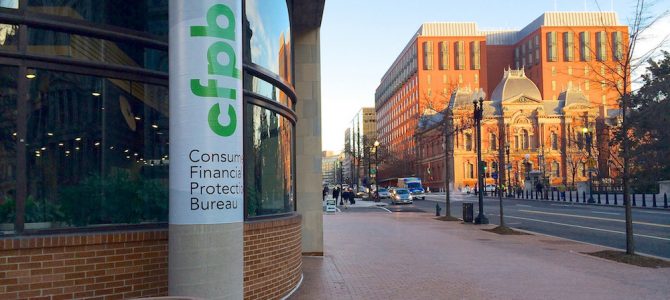
One of the headlines most frightening to progressive liberals would probably be “Extra! Extra! Donald Trump to abide by Constitution!” You can almost feel them begin to shake.
One good thing President Obama taught us was never to let a crisis go to waste. (Actually it was Obama’s first White House chief of staff, Rahm Emanuel—now the somewhat-disgraced mayor of Chicago, which on his watch has become the U.S. murder capital—who made the phrase famous, even if he didn’t invent it.) Another way of putting the thought is that every crisis should be seen as an opportunity.
President Trump has a plethora of crises to manage if he is to make America great again. One of the most important of these is taming the so-called independent regulatory agencies. There are dozens of them—perhaps scores: no one seems to know. They wield tremendous regulatory influence and control over just about every aspect of Americans’ lives, which means they will need to be reined in if Trump is to reach his goal of cutting 90 percent of regulations.
These agencies also exist essentially outside the law. At least they exist outside the Constitution, which is the highest law of the land. Or at the very least, they exist outside a strictly construed Constitution, which is the way President Trump has said the Constitution should be construed.
Start By Firing Richard Cordray
President Trump’s first not-to-be-missed opportunity to deal with the “independent” agencies is presented by the Consumer Finance Protection Bureau described by House Financial Services Chairman Jeb Hensarling, a Texas Republican, as “arguably the most powerful and least accountable Washington bureaucracy in American history.”
Established as part of the Dodd-Frank law after the 2008 financial crisis, the CFPB has only a single commissioner. Because the CFPB was established as a unit within the Federal Reserve System, it gets its funding directly from the Federal Reserve, which in turn gets its funds from its own operations.
So, in this great democracy of ours, who’s in charge of the CFPB? In theory the people are, but only, of course, through their representatives in the legislative branch who raise funds for the operations of the government, and through the executive branch which supervises the work of the agencies. But the people are not in charge of the CFPB since their elected officials control neither the CFPB’s budget nor the actions of its chairman. This situation is made for Donald Trump.
In a recent case involving an enforcement action brought by the CFPB against mortgage lender PHH, PHH challenged the CFPB’s action in U.S. Court of Appeals for the District of Columbia Circuit, where a three-judge panel reversed the enforcement action. The court said, among other things, that “The CFPB’s order violated bedrock principles of due process.” That’s about what you’d expect from an agency not subject to any political control. Two of the three judges ruled also that the structure of the agency was unconstitutional.
Now the Trump administration is said to be looking for reasons to justify firing CFPB Chairman Richard Cordray, who can be removed, according to statute, only for cause (“inefficiency,” “neglect of duty,” or “malfeasance”). It is extremely unlikely they will find such cause.
What Trump should do is stop looking for cause and simply deliver to Cordray his iconic phrase: “You’re fired!” (Just because your goal is to drain the swamp doesn’t mean you can’t shoot a few alligators along the way.)
The President Needs the Power to Fire His Employees
The problem is not just the CFPB. It’s the whole concept of independent regulatory agencies. The Constitution provides for only three branches of government: Congress, the executive branch, and the judiciary. Independent agencies fall into none of those categories.
Although the theory is that the agencies are independent of the executive branch, which is what makes them unconstitutional, under the Obama administration that was not always the case. President Obama instructed, or pressured, the Federal Communications Commission into a very controversial decision to protect so-called “net neutrality.” FCC Chairman Tom Wheeler resigned as soon as Trump became president, but suppose he had not? Should Trump have been saddled with a commissioner who had been doing President Obama’s bidding?
The Obama-Wheeler partnership is actually the way the system should work: the president should make the decisions and then be held accountable for them. And if a commissioner of an agency doesn’t do what the president wants, he should be fired.
Of course, at the moment it’s slightly more complex than that. In 1935, the Supreme Court held that President Roosevelt did not have the authority to fire a commissioner of the Federal Trade Commission. The decision is clearly wrong. The Supreme Court said the debates over the creation of the Federal Trade Commission demonstrated that the commission was not to be subject to anybody in the government, but only to “the people.”
Please. On its face, that upends the whole constitutional scheme. By attempting to make the commission subject only to “the people,” Congress made it subject to no one. Being free from legislative or executive branch (i.e., political) domination or control means being free from democratic accountability. That may please the kind of people who like government by pen and phone, but not, probably, the people who are so governed.
A few good appointments of strict constructionists to the Supreme Court could go a long way toward helping President Trump meet his goal of eliminating 90 percent of the country’s regulations—as well as rattling and rolling the progressive liberals. The court wouldn’t have to eliminate the so-called independent regulatory agencies altogether. It could just hold, as the court of appeals did in the CFPB case, that they are not independent, but subject to the control of the president, a ruling that just might produce the headline, “Extra! Extra! Supreme Court Follows Constitution.”








